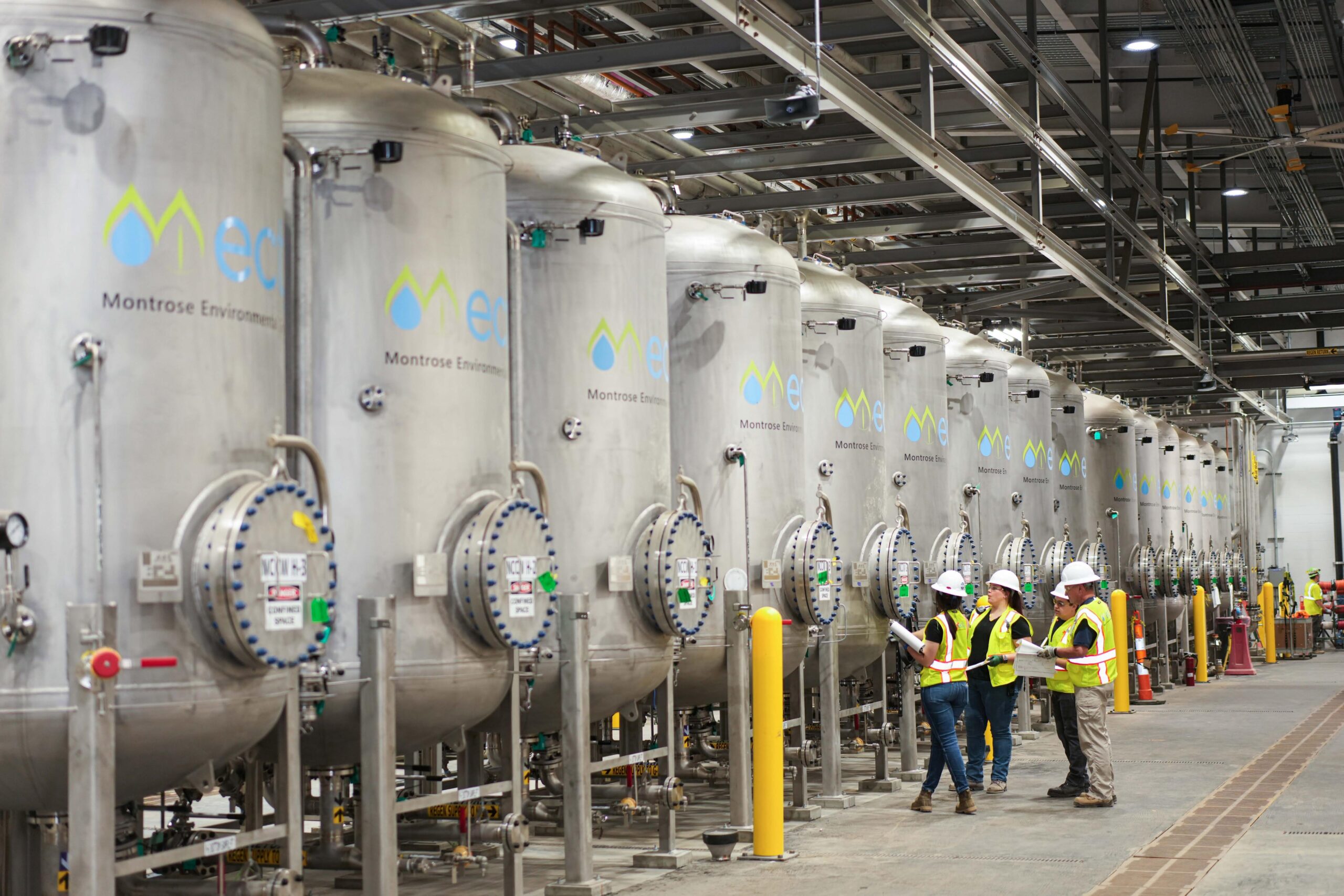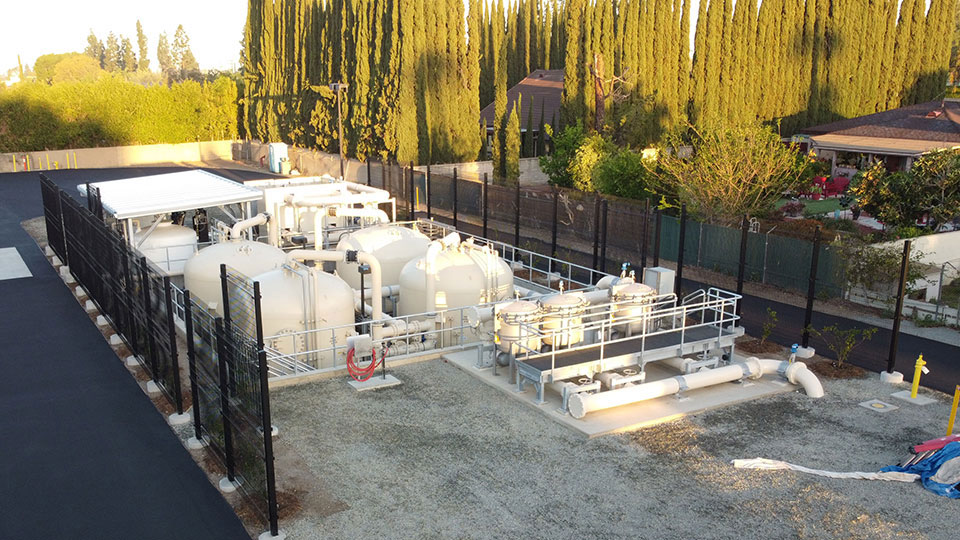Just How PFAS Therapy Ensures Tidy and Sustainable Water
The existence of PFAS, generally understood as "for life chemicals," postures substantial challenges to water top quality and public health and wellness. The implications of these treatments prolong past instant health and wellness advantages; they elevate important concerns about long-term water management strategies that must be addressed to guarantee a durable future.

Comprehending PFAS Contamination
PFAS, or per- and polyfluoroalkyl compounds, have become a considerable ecological worry due to their prevalent frequency and perseverance in the atmosphere. These synthetic chemicals have been used in different commercial applications and consumer items, including non-stick cooking equipment, water-proof garments, and food packaging, as a result of their special properties such as water and oil resistance.
The contamination of soil and water resources by PFAS takes place mostly with industrial discharges, firefighting foam use, and leaching from land fills. pfas management. Once released, these substances are immune to degradation, resulting in their accumulation in the setting. This perseverance raises important problems, as PFAS can travel cross countries via groundwater and surface water systems, influencing alcohol consumption water materials and ecosystems

Wellness Risks of PFAS
The persistence of PFAS in the setting raises considerable wellness concerns for people subjected to these substances. Study has actually linked PFAS exposure to different unfavorable health effects, consisting of immune system disorder, liver damages, and enhanced danger of certain cancers cells.
The universality of PFAS in consumer items, such as non-stick cookware, water-repellent textiles, and food product packaging, more intensifies the threat of exposure. Drinking water infected with PFAS is a significant problem, as these chemicals can leach into groundwater sources. Vulnerable populations, including youngsters and those living near commercial websites, might encounter intense risks due to their creating systems and prospective for higher exposure levels.
As recognition of these wellness dangers remains to grow, regulatory companies are starting to establish standards for PFAS degrees in alcohol consumption water. Public health efforts are necessary to reduce exposure and shield neighborhoods from the long-term effects of these harmful compounds.

Ingenious Therapy Technologies
How can we successfully take on the difficulties positioned by PFAS contamination in water sources? Innovative therapy modern technologies are becoming critical services in the quest for clean water. These techniques concentrate on the removal or damage of per- and polyfluoroalkyl substances (PFAS), which are infamous for their determination in the atmosphere.
One encouraging approach is adsorption making use of innovative products, such as turned on carbon and ion exchange resins. These materials have actually revealed efficiency in catching PFAS molecules from water. Another significant modern technology is membrane layer filtration, which uses nanofiltration and turn around osmosis to separate pollutants at the molecular degree, therefore giving a barrier against PFAS.
Furthermore, progressed oxidation procedures (AOPs) employ strong oxidants to break down PFAS compounds into harmless byproducts. This method is especially reliable for dealing with highly polluted water sources. Bioremediation strategies, employing certain microorganisms, are also being check it out checked out to deteriorate PFAS.
As research study continues, hybrid systems that combine multiple modern technologies might supply enhanced performance, dealing with the complexities of PFAS contamination. The development and execution of these innovative therapy innovations are vital steps towards guaranteeing the safety and sustainability of our water sources.
Benefits of Effective PFAS Treatment
Properly dealing with PFAS contamination in water resources significantly improves public health and environmental security. PFAS, often described as "forever chemicals," are Clicking Here immune to degradation and can build up in the human body, leading to significant health dangers such as cancer, liver damage, and body immune system disorder. By executing reliable therapy approaches, neighborhoods can lower exposure to these dangerous substances, inevitably enhancing the health and wellness results of their populaces.
Furthermore, effective PFAS therapy adds to the preservation of regional communities. Contaminated water can negatively influence aquatic life and disrupt the fragile balance of neighborhood habitats. By making certain clean water, therapy procedures secure biodiversity and keep eco-friendly stability.
Additionally, reliable PFAS removal can promote public self-confidence in water quality. When neighborhoods are ensured that their drinking water is complimentary from damaging pollutants, it promotes a sense of safety and security and well-being. This depend on is necessary for area involvement and assistance for continuous water monitoring efforts.
Future of Water Sustainability
Amid expanding concerns about water high quality and deficiency, the future of water sustainability depends upon cutting-edge methods and collaborative efforts. As neighborhoods deal with the impending threats of contaminants like PFAS, the advancement of innovative treatment modern technologies is necessary. These technologies not only concentrate on the removal of harmful compounds yet additionally promote the reuse and recycling of water, thus lowering overall need.
Moreover, efficient water governance plays a critical function in guaranteeing lasting practices. Policymakers should integrate clinical research with regulative structures to establish clear guidelines for water usage and therapy. Stakeholder involvement, consisting of local communities and industries, fosters a feeling of common obligation and motivates sustainable techniques across numerous markets.
Investment in facilities is also critical; upgrading aging systems to integrate contemporary filtering and purification methods can dramatically enhance water quality. Additionally, accepting eco-friendly innovations, such as natural filtration systems, can provide eco-friendly solutions.
Eventually, the future find out this here of water sustainability lies in an alternative technique that combines technology, policy, and community involvement. By focusing on these components, we can protect our water sources for generations to come, making sure clean and sustainable water for all.
Final Thought
In final thought, the efficient treatment of PFAS is essential for ensuring clean and sustainable water. By using innovative innovations such as triggered carbon adsorption, membrane filtration, and progressed oxidation processes, neighborhoods can dramatically decrease the health threats linked with these pollutants. In addition, the integration of these treatment approaches sustains ecosystem security and improves biodiversity. Ultimately, durable PFAS therapy techniques contribute to lasting resilience in water monitoring, cultivating public count on water high quality and promoting lasting techniques.